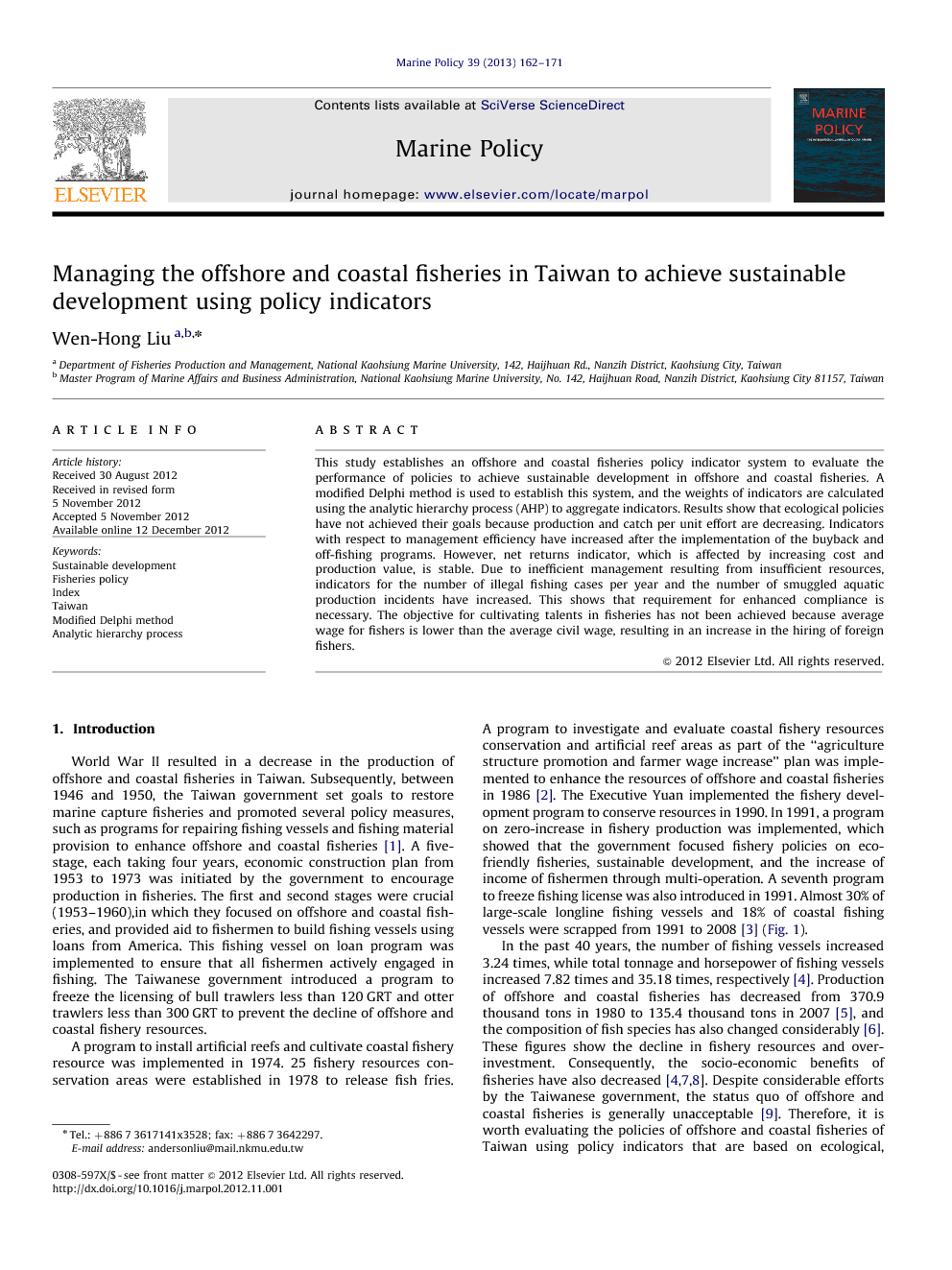ترجمه فارسی عنوان مقاله
مدیریت شیلات دریایی و ساحلی در تایوان برای رسیدن به توسعه پایدار با استفاده از شاخص های سیاست
عنوان انگلیسی
Managing the offshore and coastal fisheries in Taiwan to achieve sustainable development using policy indicators
| کد مقاله | سال انتشار | تعداد صفحات مقاله انگلیسی |
|---|---|---|
| 29466 | 2013 | 10 صفحه PDF |
منبع

Publisher : Elsevier - Science Direct (الزویر - ساینس دایرکت)
Journal : Marine Policy, Volume 39, May 2013, Pages 162–171
ترجمه کلمات کلیدی
توسعه پایدار -
سیاست شیلات -
شاخص -
تایوان -
روش دلفی اصلاح شده -
فرآیند سلسله مراتبی تحلیلی
کلمات کلیدی انگلیسی
Sustainable development,
Fisheries policy,
Index,
Taiwan,
Modified Delphi method,
Analytic hierarchy process

